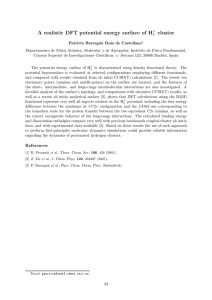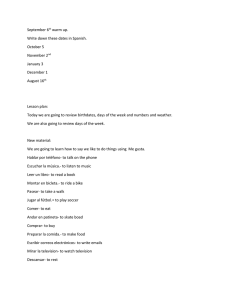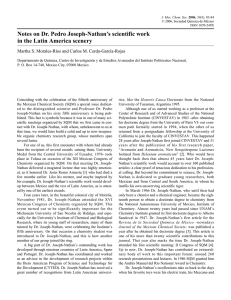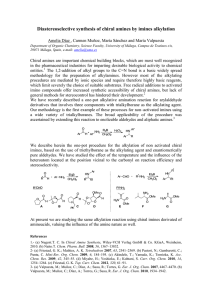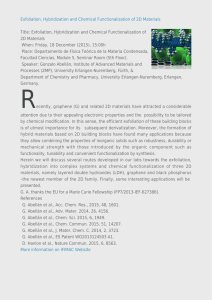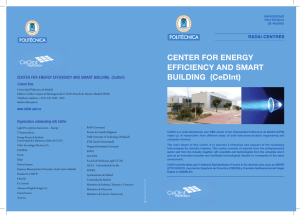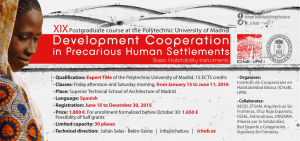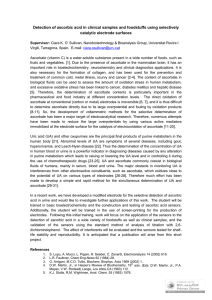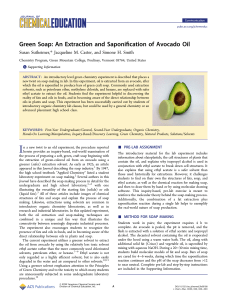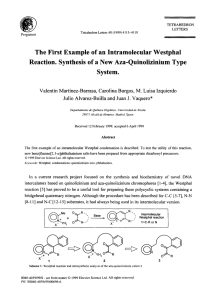A Postage Stamp About the Periodic Table
Anuncio
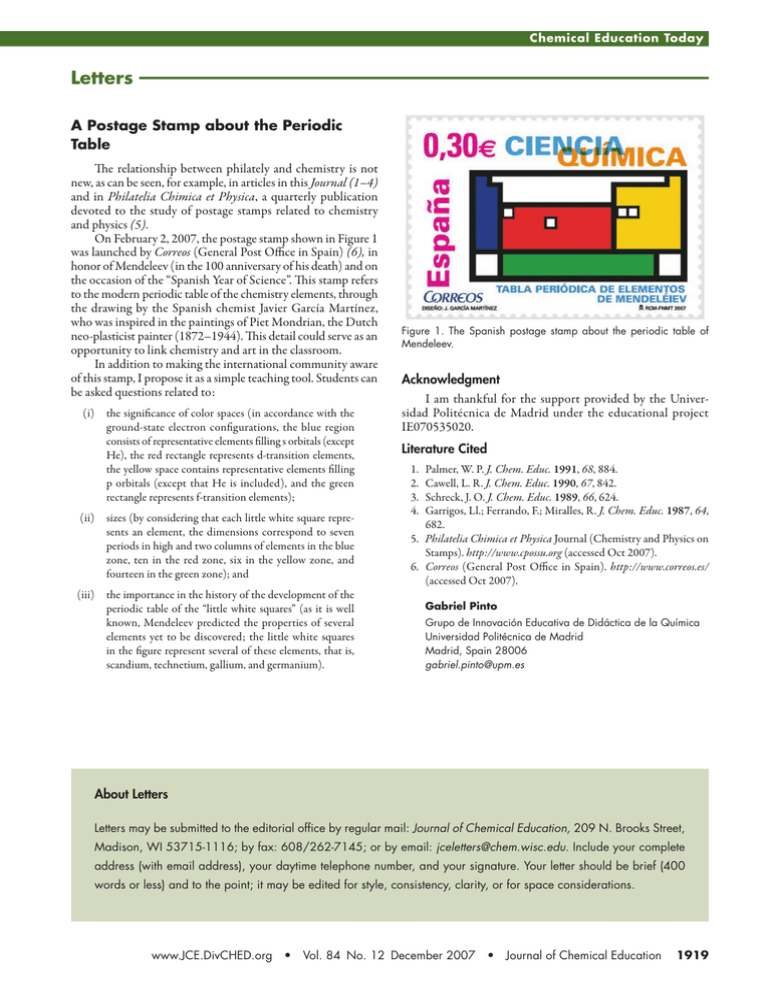
Chemical Education Today Letters A Postage Stamp about the Periodic Table The relationship between philately and chemistry is not new, as can be seen, for example, in articles in this Journal (1–4) and in Philatelia Chimica et Physica, a quarterly publication devoted to the study of postage stamps related to chemistry and physics (5). On February 2, 2007, the postage stamp shown in Figure 1 was launched by Correos (General Post Office in Spain) (6), in honor of Mendeleev (in the 100 anniversary of his death) and on the occasion of the “Spanish Year of Science”. This stamp refers to the modern periodic table of the chemistry elements, through the drawing by the Spanish chemist Javier García Martínez, who was inspired in the paintings of Piet Mondrian, the Dutch neo-plasticist painter (1872–1944). This detail could serve as an opportunity to link chemistry and art in the classroom. In addition to making the international community aware of this stamp, I propose it as a simple teaching tool. Students can be asked questions related to: (i) the significance of color spaces (in accordance with the ground-state electron configurations, the blue region consists of representative elements filling s orbitals (except He), the red rectangle represents d-transition elements, the yellow space contains representative elements filling p orbitals (except that He is included), and the green rectangle represents f-transition elements); (ii) sizes (by considering that each little white square represents an element, the dimensions correspond to seven periods in high and two columns of elements in the blue zone, ten in the red zone, six in the yellow zone, and fourteen in the green zone); and (iii) the importance in the history of the development of the periodic table of the “little white squares” (as it is well known, Mendeleev predicted the properties of several elements yet to be discovered; the little white squares in the figure represent several of these elements, that is, scandium, technetium, gallium, and germanium). Figure 1. The Spanish postage stamp about the periodic table of Mendeleev. Acknowledgment I am thankful for the support provided by the Universidad Politécnica de Madrid under the educational project IE070535020. Literature Cited Palmer, W. P. J. Chem. Educ. 1991, 68, 884. Cawell, L. R. J. Chem. Educ. 1990, 67, 842. Schreck, J. O. J. Chem. Educ. 1989, 66, 624. Garrigos, Ll.; Ferrando, F.; Miralles, R. J. Chem. Educ. 1987, 64, 682. 5. Philatelia Chimica et Physica Journal (Chemistry and Physics on Stamps). http://www.cpossu.org (accessed Oct 2007). 6. Correos (General Post Office in Spain). http://www.correos.es/ (accessed Oct 2007). 1. 2. 3. 4. Gabriel Pinto Grupo de Innovación Educativa de Didáctica de la Química Universidad Politécnica de Madrid Madrid, Spain 28006 [email protected] About Letters Letters may be submitted to the editorial office by regular mail: Journal of Chemical Education, 209 N. Brooks Street, Madison, WI 53715-1116; by fax: 608/262-7145; or by email: [email protected]. Include your complete address (with email address), your daytime telephone number, and your signature. Your letter should be brief (400 words or less) and to the point; it may be edited for style, consistency, clarity, or for space considerations. www.JCE.DivCHED.org • Vol. 84 No. 12 December 2007 • Journal of Chemical Education 1919
